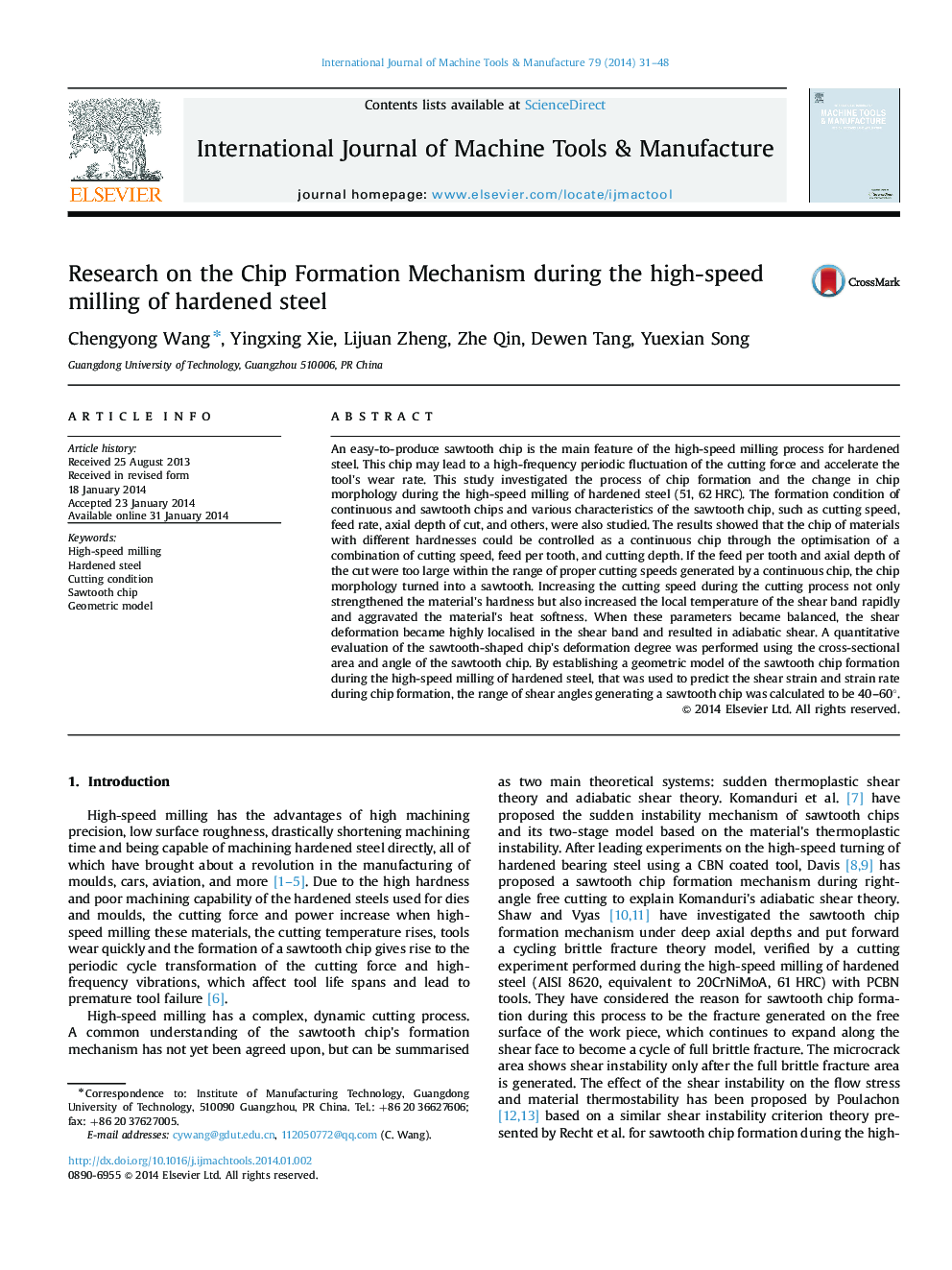| کد مقاله | کد نشریه | سال انتشار | مقاله انگلیسی | نسخه تمام متن |
|---|---|---|---|---|
| 781602 | 1464512 | 2014 | 18 صفحه PDF | دانلود رایگان |
• Process parameters cause continuous chips to transform to sawtooth chips are studied.
• Micro-characters, chip morphology of high-speed milling hardened steel were observed.
• A new quantitative index was proposed to evaluate the degree of chip deformation.
• Deformation mechanism of sawtooth chip formation was interpreted.
• A geometric sawtooth model was set up to predict the shear strain and strain rate.
An easy-to-produce sawtooth chip is the main feature of the high-speed milling process for hardened steel. This chip may lead to a high-frequency periodic fluctuation of the cutting force and accelerate the tool׳s wear rate. This study investigated the process of chip formation and the change in chip morphology during the high-speed milling of hardened steel (51, 62 HRC). The formation condition of continuous and sawtooth chips and various characteristics of the sawtooth chip, such as cutting speed, feed rate, axial depth of cut, and others, were also studied. The results showed that the chip of materials with different hardnesses could be controlled as a continuous chip through the optimisation of a combination of cutting speed, feed per tooth, and cutting depth. If the feed per tooth and axial depth of the cut were too large within the range of proper cutting speeds generated by a continuous chip, the chip morphology turned into a sawtooth. Increasing the cutting speed during the cutting process not only strengthened the material׳s hardness but also increased the local temperature of the shear band rapidly and aggravated the material׳s heat softness. When these parameters became balanced, the shear deformation became highly localised in the shear band and resulted in adiabatic shear. A quantitative evaluation of the sawtooth-shaped chip׳s deformation degree was performed using the cross-sectional area and angle of the sawtooth chip. By establishing a geometric model of the sawtooth chip formation during the high-speed milling of hardened steel, that was used to predict the shear strain and strain rate during chip formation, the range of shear angles generating a sawtooth chip was calculated to be 40–60°.
Journal: International Journal of Machine Tools and Manufacture - Volume 79, April 2014, Pages 31–48
